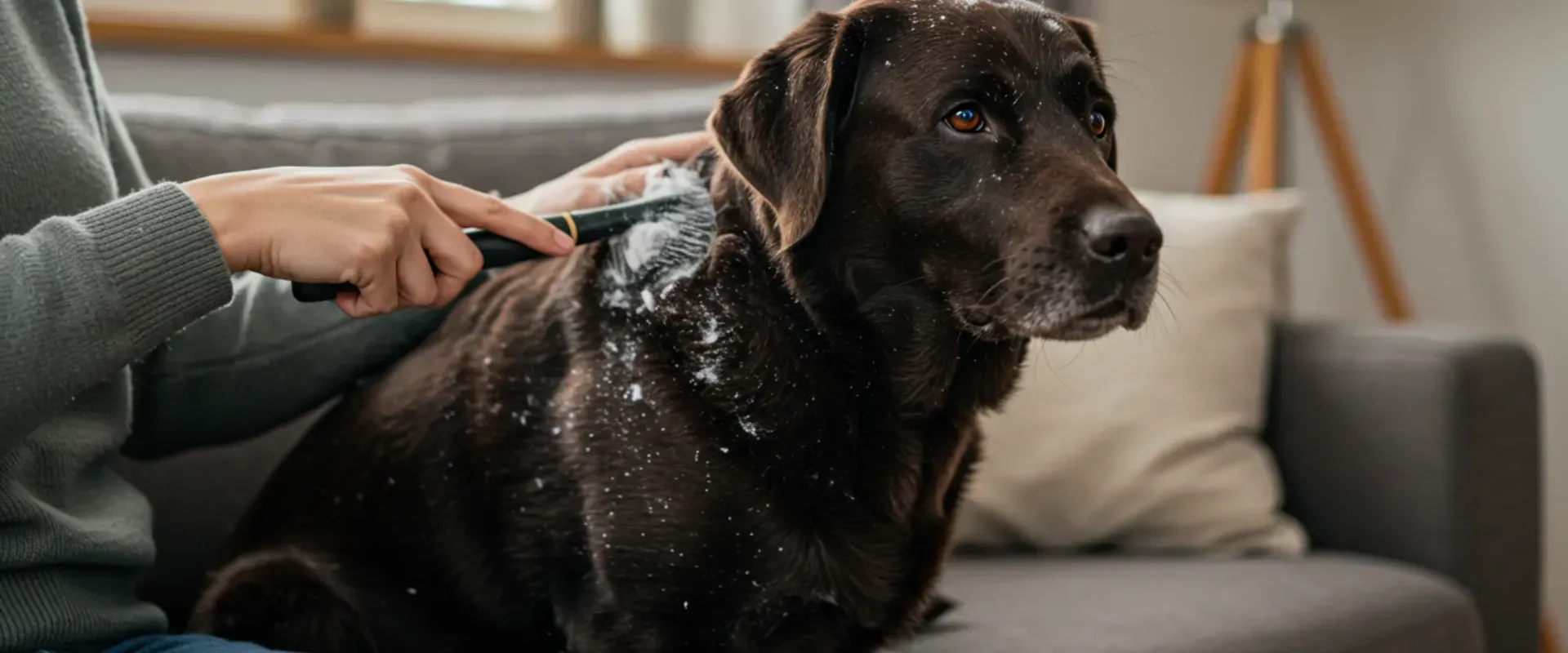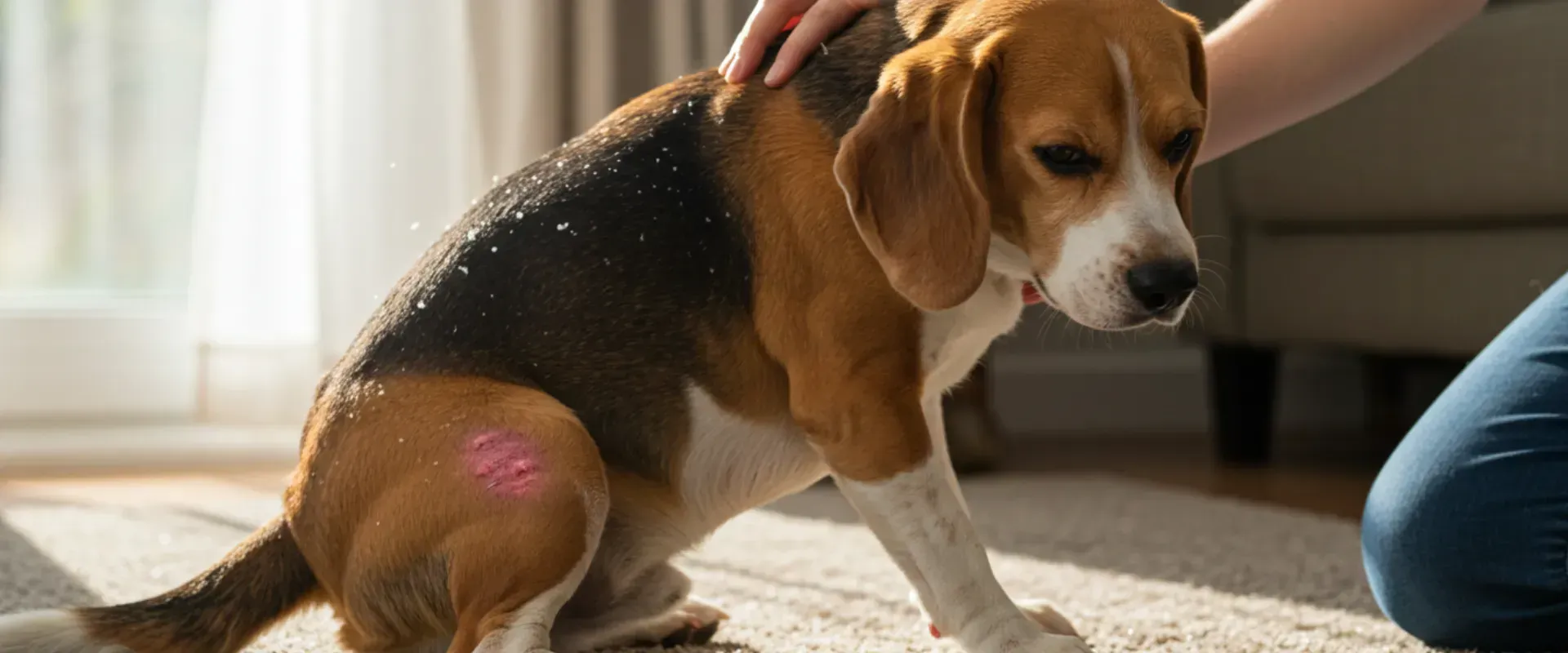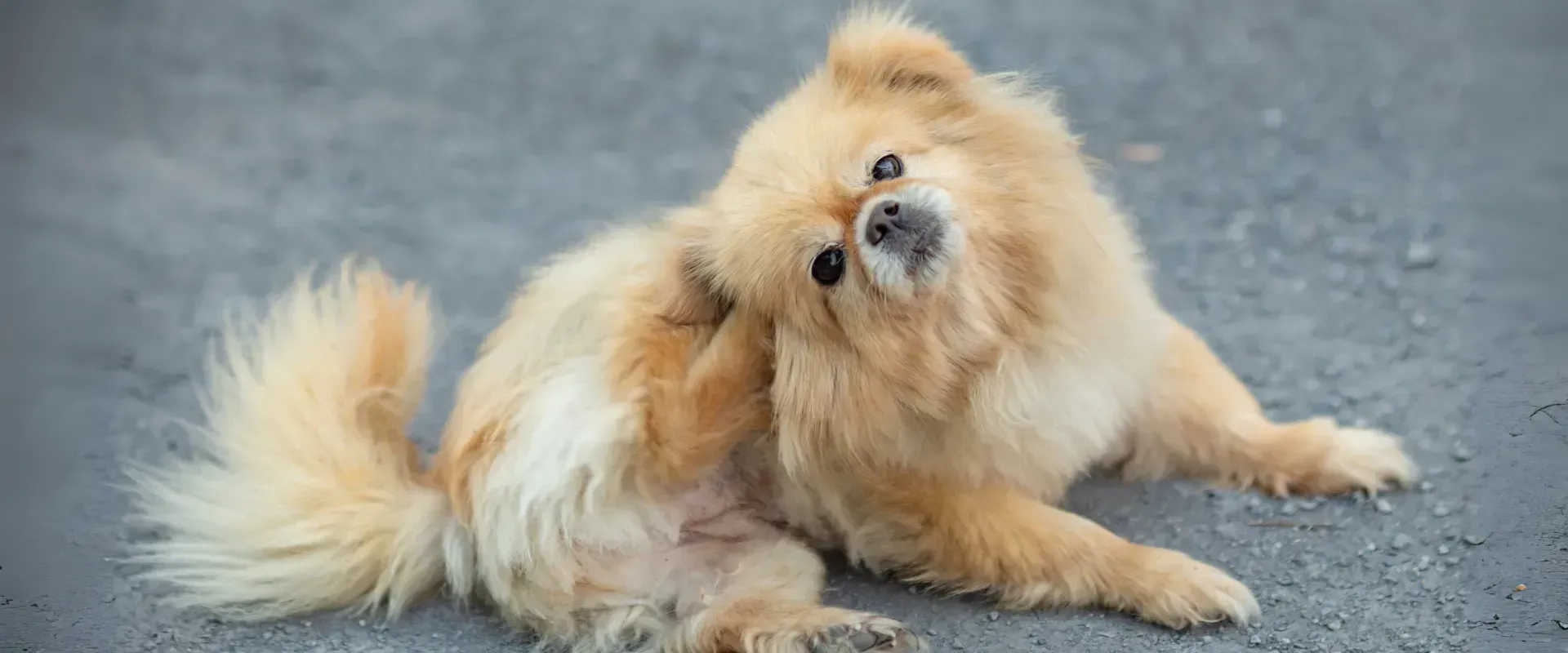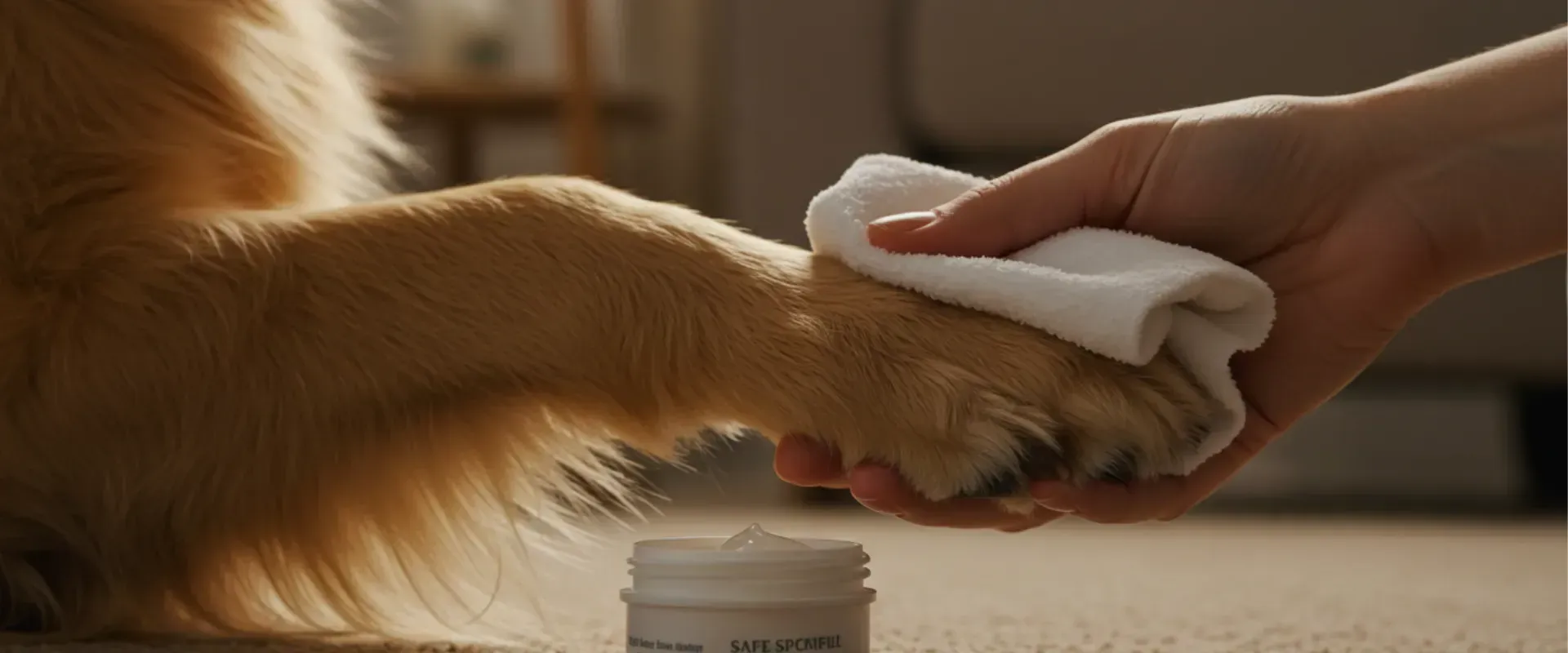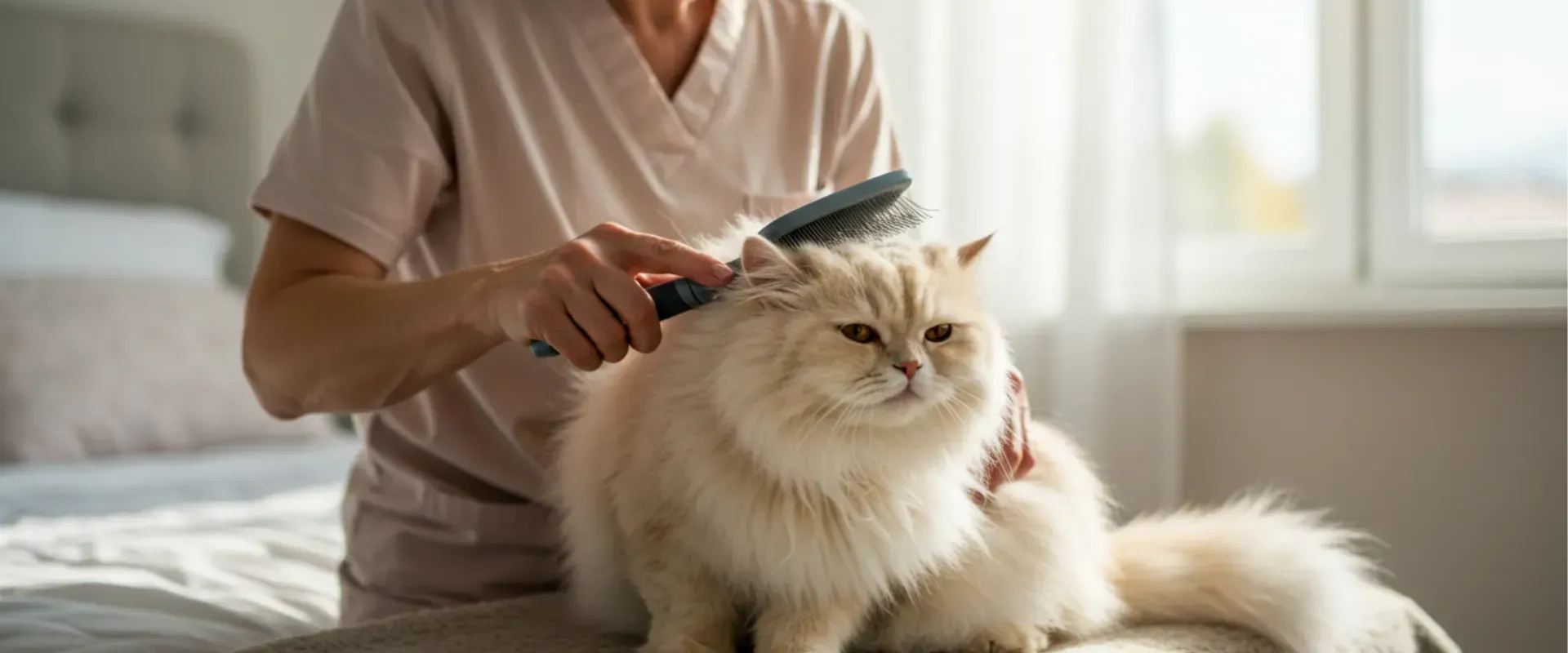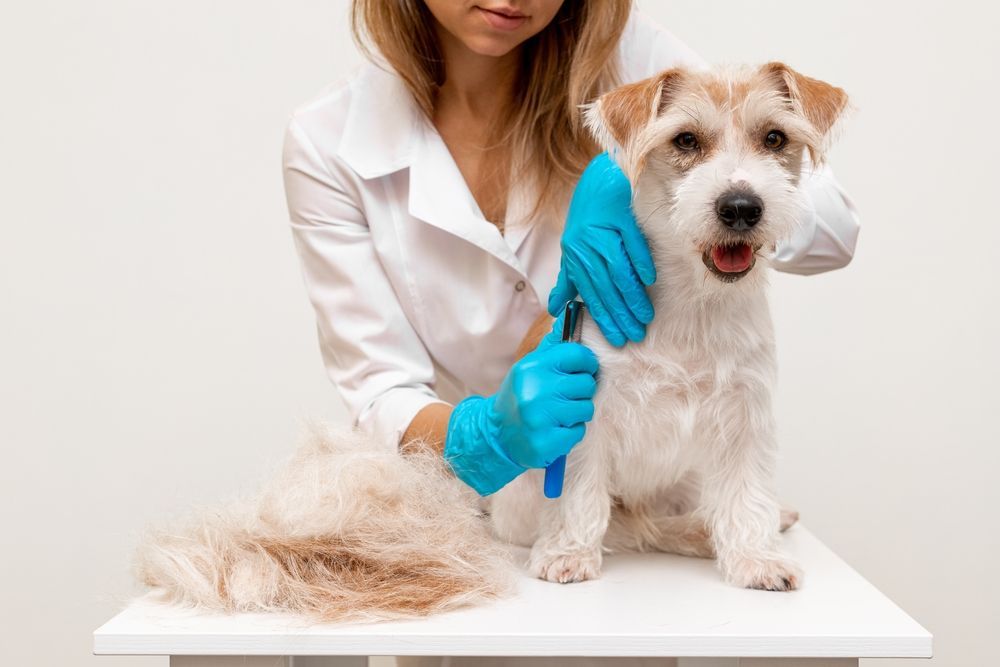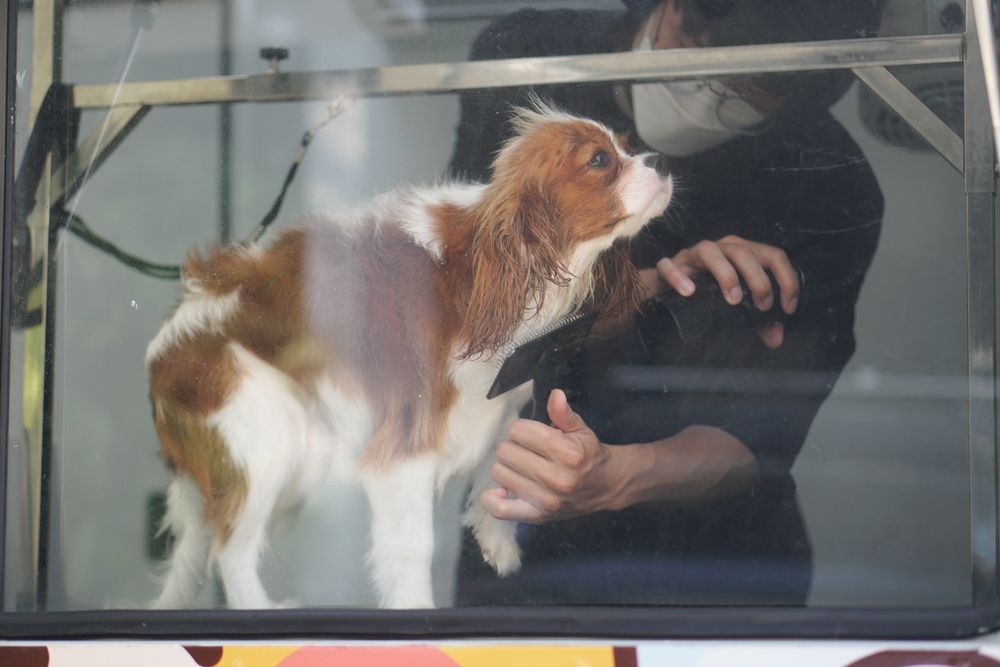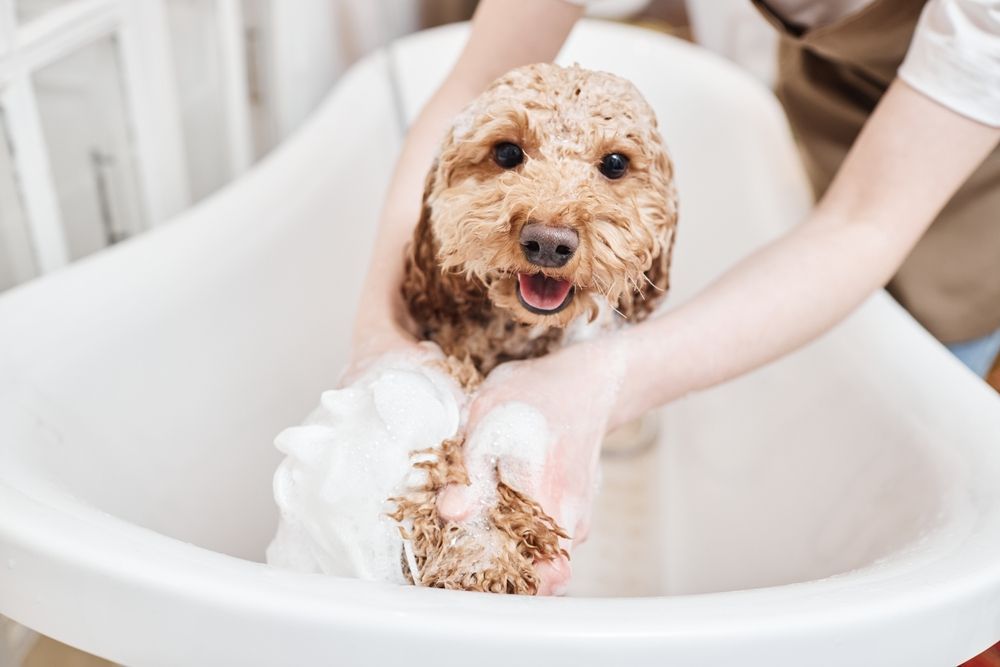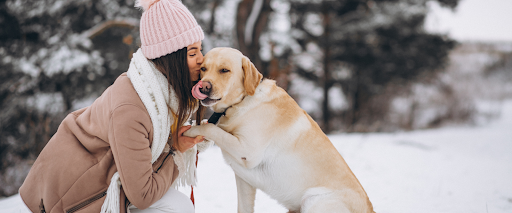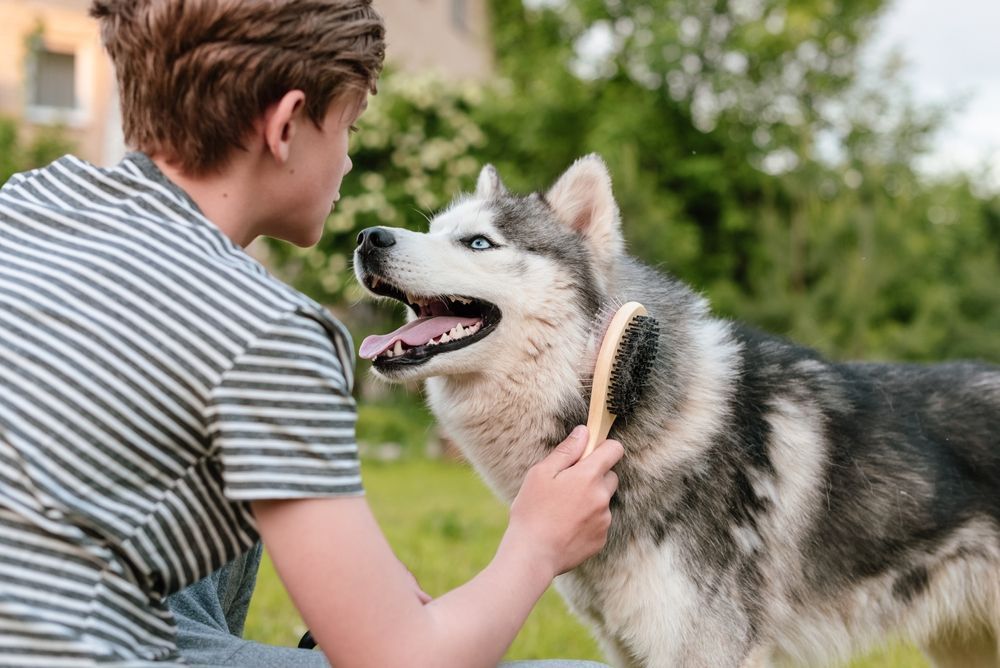How to Brush Dog Teeth and Keep Their Smile Healthy
Most pet owners focus on feeding, walking, and playing with their dogs, but there's one crucial aspect of care that often gets overlooked: dog dental hygiene. Dogs require regular dental treatment to keep their teeth and gums healthy, just like people do. Brushing your dog's teeth the right way will keep them healthy and happy, and it can also save them from getting sick.
We at Happy Hounds Mobile Pet Grooming know that taking care of your pet means more than just grooming. We focus on bringing expert grooming services to your home, but we also think it's important to teach pet owners about all areas of their dog's health, including how to take care of their teeth.
Why Dog Dental Hygiene Matters
Dog dental hygiene is more important than many pet owners realize. Poor oral health can cause more than just bad breath. It can also lead to major health concerns that impact your dog's whole body.
Health Risks of Poor Dental Care
When plaque and tartar build up on your dog's teeth, bacteria can enter the bloodstream and travel to vital organs like the heart, liver, and kidneys. Bacteremia is the name for this process, and it can lead to serious health problems.
Some common difficulties that come from not taking care of your teeth are
- Periodontal disease (affects over 80% of dogs by age 3)
- Tooth loss and pain
- Difficulty eating
- Infections that spread to other body parts
- Problems with the heart, liver, and kidneys
Signs Your Dog Needs Better Dental Care
Look out for these indicators that your dog requires dental care right away:
- Persistent bad breath
- Yellow or brown tartar buildup on teeth
- Red, swollen, or bleeding gums
- Difficulty chewing or eating
- Pawing at the face or mouth
- Loose or missing teeth
Getting Started: What You Need to Brush Your Dog's Teeth
Before you start brushing your dog's teeth, make sure you have everything you need. Using human toothpaste can be risky for dogs because it contains xylitol, which is harmful to them.
Essential Supplies
Dog-Specific Toothbrush Options:
- Finger toothbrushes (great for beginners)
- Small, soft-bristled dog toothbrushes
- Angled toothbrushes for better reach
Dog-Safe Toothpaste:
- Enzymatic toothpaste (helps break down plaque)
- Flavored options (chicken, beef, or peanut butter)
- Never use human toothpaste.
Additional Helpful Items:
- Dental wipes for initial cleaning
- High-value treats for positive reinforcement
- Towel for cleanup
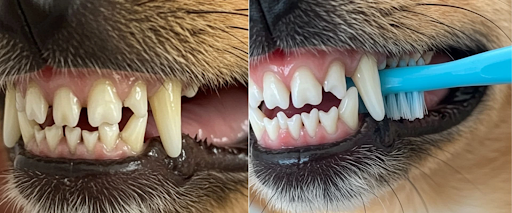
Step-by-Step Guide: How to Brush Dog Teeth
It takes time and experience to learn how to brush a dog's teeth. Start with short brushing sessions and work your way up to full sessions over the course of a few weeks.
Step 1: Introduce Your Dog to the Process
Start by letting your dog smell and taste the toothpaste. Most dogs like the flavored kinds. Let them lick it off your finger so they connect it with something good.
Next, carefully pull up your dog's lips so you can see their teeth and gums. Do this for a few seconds at first, rewarding yourself with food and praise.
Step 2: Get Your Dog Comfortable with Touching
Start stroking your dog's teeth and gums with your finger when they get used to having their lips lifted. Start with the front teeth and work your way back to the back molars.
Do these exercises every day for a few days, and make sure the sessions are always short and positive. If your dog is acting stressed, stop and try again later.
Step 3: Introduce the Toothbrush
Let your dog sniff around the toothbrush. Put a little toothpaste on it and let them lick it off. The scent helps them connect the brush with something nice.
Step 4: Start Brushing
Start with the teeth that are easiest to reach, like the big canine teeth and the front teeth. Instead of scrubbing hard, use gentle, circular strokes.
Pay special attention to the outside surfaces of your teeth, where plaque usually builds up. Don't bother about brushing the inside surfaces at first; your dog's tongue will naturally clean these regions.
Step 5: Gradually Increase Duration
Begin by brushing your dog's teeth for 10 to 15 seconds, and then slowly extend the time to 2 to 3 minutes as your dog becomes used to it. Always give sweets and praise at the end.
Advanced Techniques for Successful Dog Dental Hygiene
Making Brushing Fun
Making brushing your dog's teeth a pleasant experience is the most important thing you can do. Give them high-value goodies, be cool, and don't force them to do it.
Consider these tips:
- Pick a moment when your dog is calm and quiet.
- Speak in a calm, soothing voice the whole time.
- If your dog is nervous, give him breaks.
- Give a reward for every modest win.
Dealing with Resistant Dogs
Even if you try your best, some dogs may not want to have their teeth brushed. These other methods might work:
Gradual Desensitization:
- Start by just touching the muzzle area.
- Start by lifting your lips for a short time.
- Before using a toothbrush, teach your child to brush their fingers.
- Do short practice sessions every day.
Alternative Methods:
- Wipes for washing teeth for the first time
- Finger cots with rough surfaces
- Dental chews as extras, not replacements
Frequency and Timing
You should brush your dog's teeth every day if you can. But doing it 3 to 4 times a week can still be quite helpful. Pick a moment when your dog is quiet and you don't have to hurry.
Many pet owners have luck brushing their dogs' teeth after walks, when the dogs are calmer, or making it part of their nighttime routine.
Common Mistakes to Avoid
Even pet owners who mean well sometimes make mistakes when they learn how to brush their dog's teeth. Stay away from these typical mistakes:
- Using Wrong Products
Never use toothpaste made for people, baking soda, or other things around the house. These can be bad for dogs and make them quite sick.
- Rushing the Process
Trying to brush all of your teeth precisely the first time often makes things worse. Take your time and build up slowly.
- Ignoring Warning Signs
If your dog is very stressed, aggressive, or in pain when you brush him, stop right away and call your vet. Some dogs may have dental problems that need to be looked at by a specialist first.
- Inconsistent Routine
Brushing every now and again isn't as good as doing it often for shorter amounts of time. Your dog will get used to things better and have better oral health if you are consistent.

Professional Dental Care and When to Seek Help
Regular home care is crucial, but professional dental cleanings are still an important aspect of keeping your dog's teeth clean. Veterinary dental work can fix problems that you can't fix at home.
Signs You Need Professional Help
If you see any of the following, make an appointment for a dental inspection with your vet:
- Severe tartar buildup
- Broken or loose teeth
- Persistent bad breath despite regular brushing
- Bleeding gums
- Signs of pain when eating
Complementing Home Care
Professional cleanings typically involve:
- Full mouth inspection while under anesthesia
- Cleaning and polishing all surfaces of the teeth
- Checking the health of your teeth and gums
- Fixing any faults that are found
Additional Tools and Techniques
Dental Chews and Toys
Dental chews can help with your dog's oral care routine, but they shouldn't replace brushing.
- Look for Veterinary Oral Health Council (VOHC)-approved products.
- Pick the right sizes for your dog.
- Watch your dog while he or she chews to make sure he or she doesn't choke.
Water Additives
Some water additives can help reduce bacteria and freshen breath:
- Dog-friendly dental rinses
- Always talk to your vet before giving your pet vitamins.
- Things to Think About When Eating
Diet Considerations
Certain foods can support dental health:
- When compared to wet food, dry kibble may assist in getting rid of plaque.
- Raw bones of the right size and type can help clean teeth.
- Stay away from rough things that could damage your teeth.
Creating a Sustainable Routine
To keep your dog's teeth clean, you need to make a schedule that works for both of you. Start small and work your way up.
Weekly Schedule Example
- Monday, Wednesday, Friday: Full tooth brushing
- Tuesday, Thursday: Dental wipes or finger brushing
- Saturday: Dental chew or toy session
- Sunday: Rest day or light maintenance
Tracking Progress
Keep a simple log of your dog's dental care:
- Note any improvements in breath or gum health.
- Track your dog's comfort level with the process.
- Record any concerning changes.
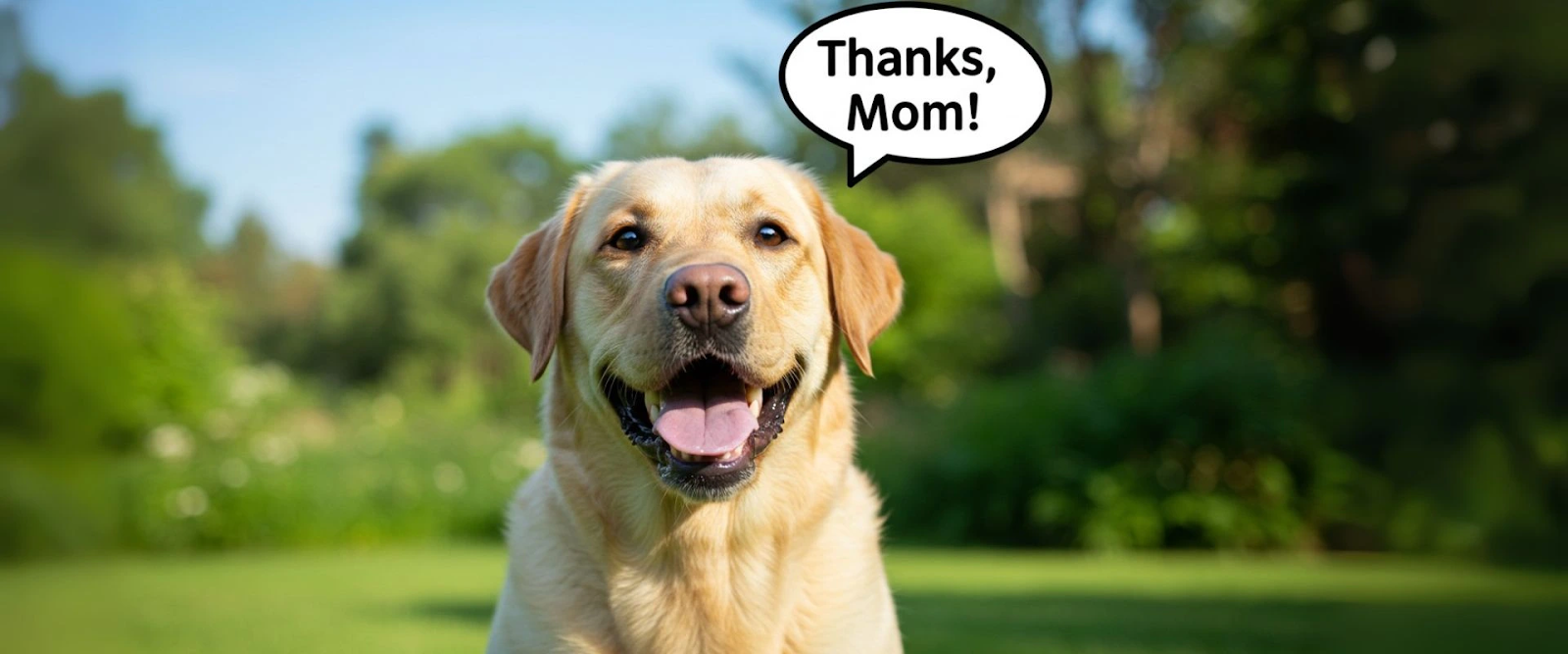
Building Lifelong Healthy Habits
The time and effort you spend learning how to brush your dog's teeth correctly will pay off for the rest of their lives. Good dental care can:
- Extend your dog's lifespan.
- Prevent costly dental procedures.
- Keep your dog comfortable and pain-free.
- Strengthen the bond between you and your pet.
Remember that every dog is different. Some may take to tooth brushing quickly, while others need more time and patience. The key is consistency and positive reinforcement.
Just as Happy Hounds Mobile Pet Grooming brings professional care to your doorstep for your dog's grooming needs. Ready to give your dog the comprehensive care they deserve? Contact Happy Hounds Mobile Pet Grooming today.
Frequently Asked Questions
How often should I brush my dog's teeth?
Daily brushing is ideal, but 3-4 times per week can still provide significant benefits. Consistency is more important than frequency.
What if my dog absolutely refuses to let me brush their teeth?
Start with dental wipes or finger brushing to build tolerance. If your dog continues to resist, consult your veterinarian about alternative options or possible underlying dental issues.
Can I use human toothpaste on my dog?
Never use human toothpaste on dogs. It contains ingredients like xylitol that are toxic to canines. Always use toothpaste specifically formulated for dogs.
At what age should I start brushing my dog's teeth?
Start as early as possible, ideally when your dog is a puppy. However, older dogs can also learn to accept tooth brushing with patience and proper introduction.


